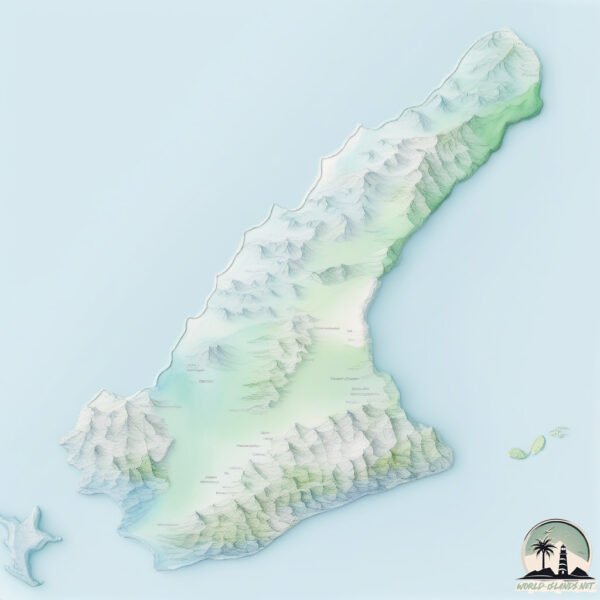Welcome to Awaji Shima , a Temperate island in the Seto Naikai or Inland Sea, part of the majestic Pacific Ocean. This guide offers a comprehensive overview of what makes Awaji Shima unique – from its geography and climate to its population, infrastructure, and beyond. Dive into the details:
Geography and size of Awaji Shima
Size: 598.2 km²Coastline: 187.9 kmOcean: Pacific OceanSea: Seto Naikai or Inland SeaContinent: Asia
Awaji Shima is a Large Island spanning 598 km² with a coastline of 188 km.
Archipel: Japan – An East Asian archipelago comprising four main islands and numerous smaller ones, known for its rich history, technological advances, and distinct culture.
Tectonic Plate: Eurasia – One of the world’s largest tectonic plates, the Eurasian Plate covers a significant portion of Europe and Asia. It’s characterized by diverse geological features, including the Ural Mountains, the European Plain, and the Himalayas formed from its collision with the Indian Plate.
The geographic heart of the island is pinpointed at these coordinates:
Climate and weather of Awaji Shima
Climate Zone: TemperateClimate Details: Humid Subtropical ClimateTemperature: Hot Summer
Climate Characteristics: With continuous rainfall and hot summers, this climate is common in some coastal regions, supporting diverse vegetation.
Topography and nature of Awaji Shima
Timezone: UTC+09:00Timezone places: Asia/TokyoMax. Elevation: 486 m Mean Elevation: 122 mVegetation: Evergreen Broadleaf ForestTree Coverage: 47%
The mean elevation is 122 m. The highest elevation on the island reaches approximately 486 meters above sea level. The island is characterized by Hills: Gently sloping landforms with rounded tops, having a maximum elevation between 200 and 500 meters. Hills contribute to a varied landscape on islands.
Dominating Vegetation: Evergreen Broadleaf Forest
Vegetation: 13 vegetation zones – Exceptionally Diverse Island
Infrastructure and Travelling to Awaji Shima
Does the island have a public airport? no .
Does the island have a major port? no .
The mean population of Awaji Shima is 239 per km². Awaji Shima is Moderately Inhabited. The island belongs to Japan .
The name of the island resonates across different cultures and languages. Here is how it is known around the world: Arabic: شيكوكو; Spanish: Shikoku; French: Shikoku; Portuguese: Shikoku; Russian: Сикоку; Chinese: 四國
Continuing your journey, Kansai Airport is the next notable island, situated merely km away.
Awajishima Should Be On Your Next Japan Trip | In and Around Awajishima 4K #hyogo #awaji #japan
Hey guys, welcome back to my channel. In today's video we will be visiting the AWAJI Island in Hyogo Prefecture. A little over 2 ...
Awajishima Should Be On Your Next Japan Trip | In and Around Awajishima 4K #hyogo #awaji #japan
Hey guys, welcome back to my channel. In today's video we will be ...
Hey guys, welcome back to my channel. In today's video we will be visiting the AWAJI Island in Hyogo Prefecture. A little over 2 ...
Awaji-shima island, the holy fortress Awaji island
The last samurai visits Awaji-shima island and introduces Izanagi ...
The last samurai visits Awaji-shima island and introduces Izanagi jingu shrine, Sumoto castle and Uzushio, the famous whirlpool ...
TRAVELING JAPAN? COME HERE! KOBE-AWAJI ISLAND- HIMEJI | HYOGO TRAVEL VLOG
TRAVEL HOYGO PREFECTURE IN JAPAN! 3 CITIES AND SO MUCH TO DO. We ...
TRAVEL HOYGO PREFECTURE IN JAPAN! 3 CITIES AND SO MUCH TO DO. We visited Kobe, Awaji island, and himeji!
Japan is classified as Developed region: G7: Group of Seven – Major advanced economies, including Canada, France, Germany, Italy, Japan, the United Kingdom, and the United States. The level of income is High income: OECD.
News – Latest Updates and Headlines from Awaji Shima
Stay informed with the most recent news and important headlines from Awaji Shima. Here’s a roundup of the latest developments.
Loading...
Please note: The data used here has been primarily extracted from satellite readings. Deviations from exact values may occur, particularly regarding the height of elevations and population density. Land area and coastline measurements refer to average values at mean high tide.

